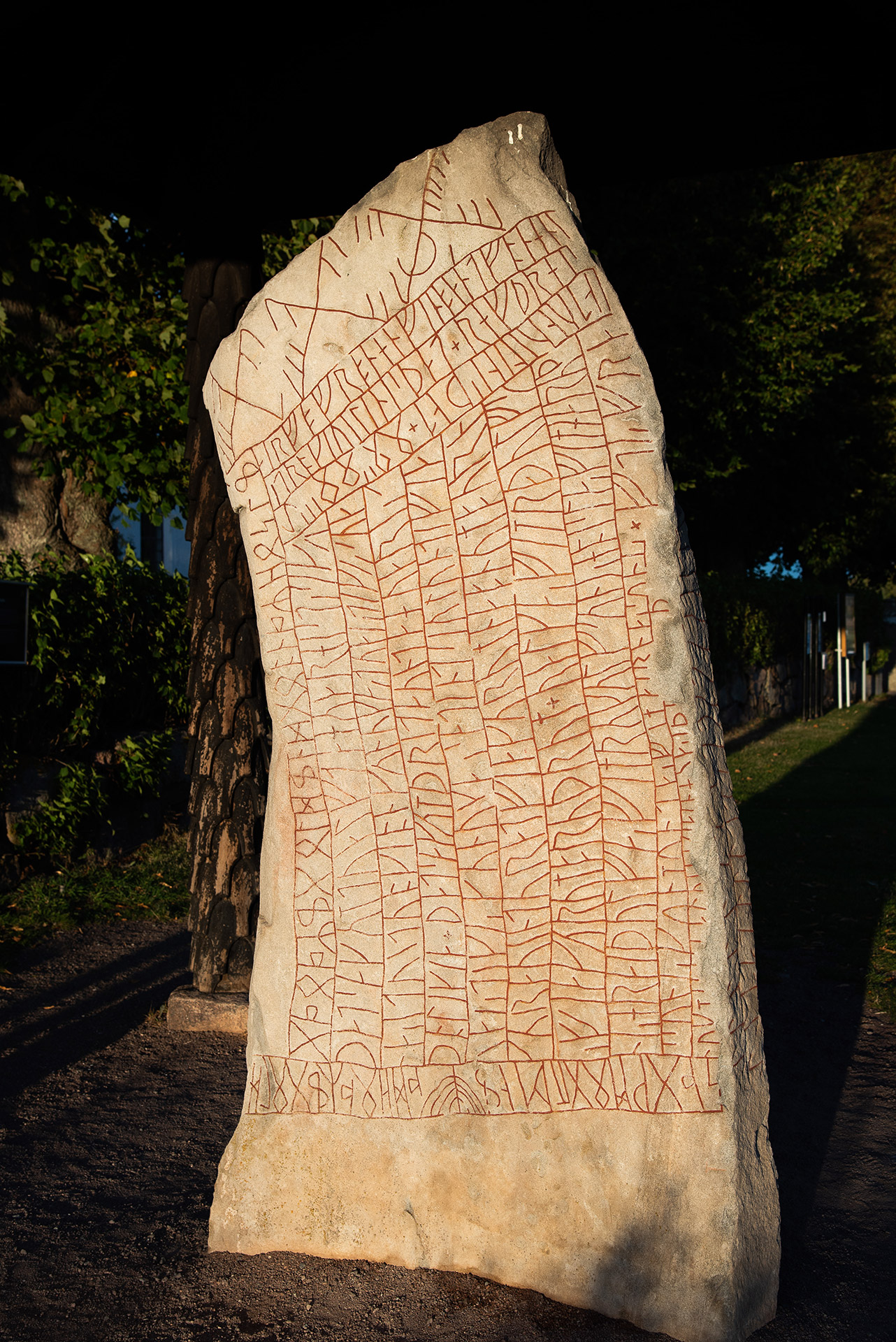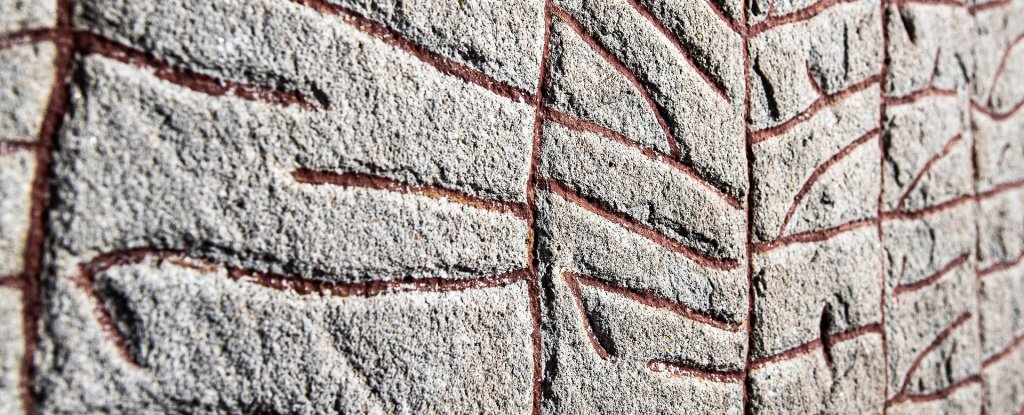Debra
Dagobah Resident
Ancient Viking Runestone Warned of 'Extremely Ominous' Climate Crisis, Scholars Say
AFP
9 JAN 2020
One of the world's most famous runestones is now believed to have been erected by Vikings fearing a repeat of a previous cold climate crisis in Scandinavia, a new study said Wednesday.
The Rok stone, raised in the ninth century near the lake Vattern in south central Sweden, bears the longest runic inscription in the world with more than 700 runes covering its five sides.
It is believed to have been erected as a memorial to a dead son, but the exact meaning of the text has remained elusive, as parts are missing and it contains different writing forms.
The stone refers to the heroic acts of 'Theodoric', which some scholars believe refers to Theodoric the Great, a sixth century ruler of the Ostrogoths in what is now Italy.
Researchers at three Swedish universities now suspect the inscriptions are more of an allusion to an impending period of extreme winter, as the person who erected the stone tried to put their child's death into a larger perspective.
 (University of Gothenburg)
(University of Gothenburg)
"The inscription deals with an anxiety triggered by a son's death and the fear of a new climate crisis similar to the catastrophic one after 536 CE," the authors wrote.
The sixth century crisis is believed to have been caused by a series of volcanic eruptions which dramatically influenced climate with lower average temperatures, ruined crops and ensuing hunger and mass extinctions.
It has been estimated that as a result the population of the Scandinavian peninsula decreased by at least 50 percent, and the researchers point out that the memory of those events may have been passed down and even influenced the mythology.
'Extremely ominous'
The new interpretation is based on a collaborative approach between researchers from several disciplines, including philology, archaeology and the history of religion.
Passages from the stone suggest the text refers to battles over a hundred years.
But the researchers suggest it could be speaking of a different kind of battle: "The conflict between light and darkness, warmth and cold, life and death".
They also take into account a number of events in the author of the text's lifetime, which could "have seemed extremely ominous".
"A powerful solar storm coloured the sky in dramatic shades of red, crop yields suffered from an extremely cold summer, and later a solar eclipse occurred just after sunrise," said Bo Graslund, professor in archaeology at Uppsala University.
"Even one of these events would have been enough to raise fears of another Fimbulwinter," Graslund added referring to a winter lasting three years in Norse mythology, a sign of the coming of Ragnarok.
© Agence France-Presse

 www.sciencealert.com
www.sciencealert.com
From the paper cited in the article:
[...]
Abstract [en]
The Rök runestone from central middle Sweden, dated to around 800 CE, is famous, among other things, for a supposed reference to the emperor Theodoric the Great. This study proposes instead that the inscription deals with an anxiety triggered by a son’s death and the fear of a new climate crisis similar to the catastrophic one after 536 CE. Combining perspectives and findings from semiotics, philology, archaeology, and history of religion, the study presents a completely new interpretation which follows a unified theme, showing how the monument can be understood in the socio-cultural and religious context of early Viking Age Scandinavia. The inscription consists, according to the proposed interpretation, of nine enigmatic questions. Five of the questions concern the sun, and four of them, it is argued, ask about issues related to the god Odin. A central finding is that there are relevant parallels to the inscription in early Scandinavian poetry, especially in the Eddic poem Vafþrúðnismál.
 uu.diva-portal.org
uu.diva-portal.org
AFP
9 JAN 2020
One of the world's most famous runestones is now believed to have been erected by Vikings fearing a repeat of a previous cold climate crisis in Scandinavia, a new study said Wednesday.
The Rok stone, raised in the ninth century near the lake Vattern in south central Sweden, bears the longest runic inscription in the world with more than 700 runes covering its five sides.
It is believed to have been erected as a memorial to a dead son, but the exact meaning of the text has remained elusive, as parts are missing and it contains different writing forms.
The stone refers to the heroic acts of 'Theodoric', which some scholars believe refers to Theodoric the Great, a sixth century ruler of the Ostrogoths in what is now Italy.
Researchers at three Swedish universities now suspect the inscriptions are more of an allusion to an impending period of extreme winter, as the person who erected the stone tried to put their child's death into a larger perspective.

"The inscription deals with an anxiety triggered by a son's death and the fear of a new climate crisis similar to the catastrophic one after 536 CE," the authors wrote.
The sixth century crisis is believed to have been caused by a series of volcanic eruptions which dramatically influenced climate with lower average temperatures, ruined crops and ensuing hunger and mass extinctions.
It has been estimated that as a result the population of the Scandinavian peninsula decreased by at least 50 percent, and the researchers point out that the memory of those events may have been passed down and even influenced the mythology.
'Extremely ominous'
The new interpretation is based on a collaborative approach between researchers from several disciplines, including philology, archaeology and the history of religion.
Passages from the stone suggest the text refers to battles over a hundred years.
But the researchers suggest it could be speaking of a different kind of battle: "The conflict between light and darkness, warmth and cold, life and death".
They also take into account a number of events in the author of the text's lifetime, which could "have seemed extremely ominous".
"A powerful solar storm coloured the sky in dramatic shades of red, crop yields suffered from an extremely cold summer, and later a solar eclipse occurred just after sunrise," said Bo Graslund, professor in archaeology at Uppsala University.
"Even one of these events would have been enough to raise fears of another Fimbulwinter," Graslund added referring to a winter lasting three years in Norse mythology, a sign of the coming of Ragnarok.
© Agence France-Presse

Ancient Viking Runestone Warned of 'Extremely Ominous' Climate Crisis, Scholars Say
One of the world's most famous runestones is now believed to have been erected by Vikings fearing a repeat of a previous cold climate crisis in Scandinavia, a new study said Wednesday.
From the paper cited in the article:
[...]
Abstract [en]
The Rök runestone from central middle Sweden, dated to around 800 CE, is famous, among other things, for a supposed reference to the emperor Theodoric the Great. This study proposes instead that the inscription deals with an anxiety triggered by a son’s death and the fear of a new climate crisis similar to the catastrophic one after 536 CE. Combining perspectives and findings from semiotics, philology, archaeology, and history of religion, the study presents a completely new interpretation which follows a unified theme, showing how the monument can be understood in the socio-cultural and religious context of early Viking Age Scandinavia. The inscription consists, according to the proposed interpretation, of nine enigmatic questions. Five of the questions concern the sun, and four of them, it is argued, ask about issues related to the god Odin. A central finding is that there are relevant parallels to the inscription in early Scandinavian poetry, especially in the Eddic poem Vafþrúðnismál.
